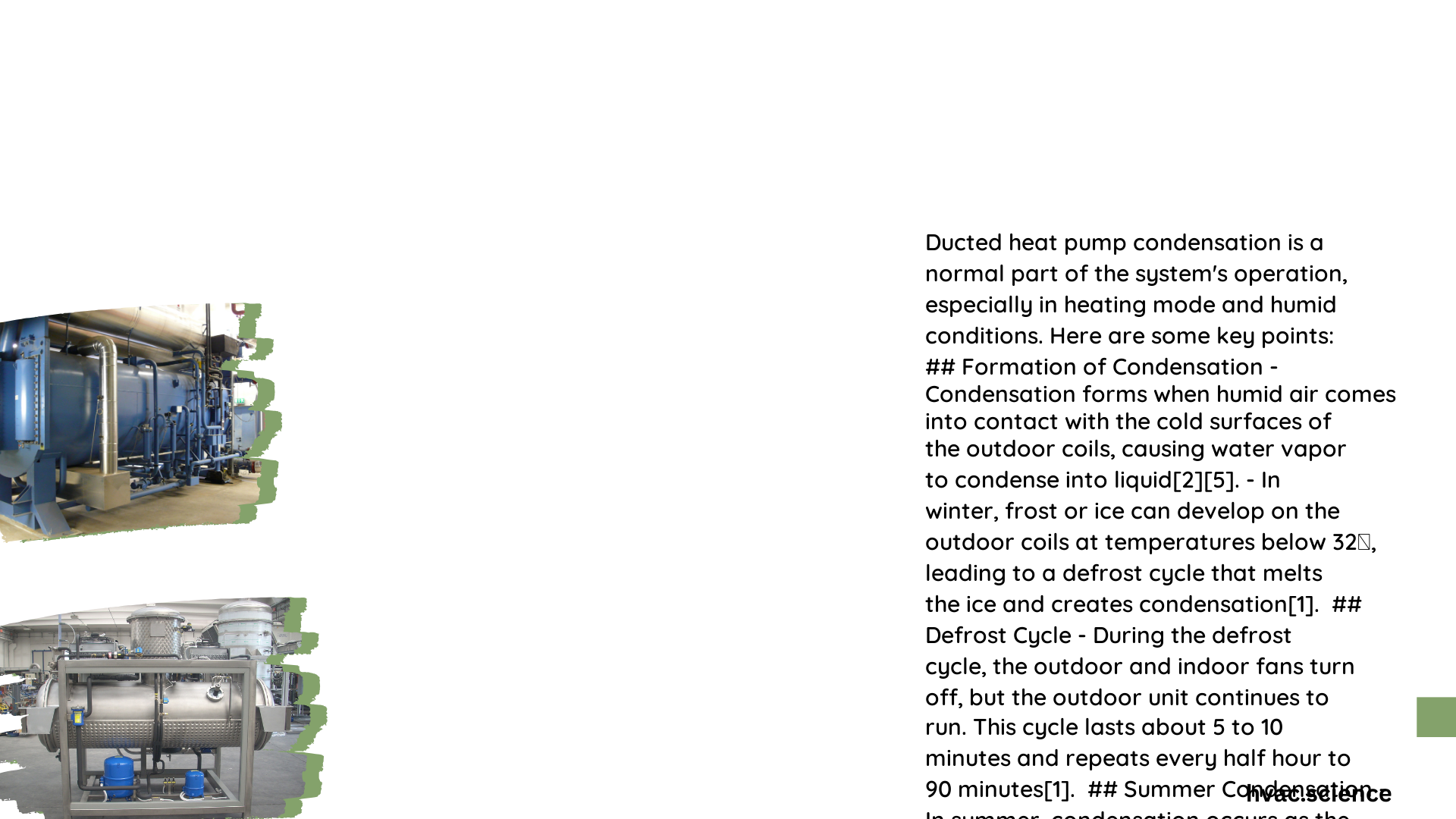Ducted heat pump condensation is a common issue that can significantly impact HVAC system efficiency and home comfort. This phenomenon occurs when warm, moist air comes into contact with cooler surfaces within the ductwork, leading to water droplet formation. Understanding the causes, effects, and solutions to ducted heat pump condensation is crucial for maintaining optimal system performance and preventing potential damage to your home.
What Causes Ducted Heat Pump Condensation?
Ducted heat pump condensation can stem from various factors, each contributing to the overall problem. Let’s explore the primary causes:
- Leaky Ducts: Air leaks in the ductwork allow warm, humid air to enter cooler ducts, promoting condensation.
- Poor Duct Insulation: Insufficient insulation around air ducts creates temperature discrepancies, leading to condensation.
- High Humidity: Elevated moisture levels, especially in unconditioned spaces like attics or crawl spaces, contribute to condensation on ducts.
- Dirty Air Filters: Clogged filters force the heat pump to work harder, increasing condensation.
- Clogged Condensate Drain Lines: Blockages in drain lines prevent proper water removal, exacerbating condensation issues.
- Frozen Evaporator Coil: A frozen coil can create excessive condensation as it thaws, overwhelming the drainage system.
How Does Condensation Affect Heat Pump Performance?

Ducted heat pump condensation can have several negative impacts on system performance and your home environment:
- Reduced HVAC Efficiency: Condensation can obstruct airflow, causing the system to work harder and consume more energy.
- Mold and Mildew Growth: Excess moisture provides an ideal environment for mold and mildew, affecting indoor air quality.
- Structural Damage: Prolonged exposure to condensation can harm ductwork, leading to corrosion and integrity issues.
- Water Damage: Constant dripping can result in damage to ceilings, walls, insulation, flooring, and furniture.
The measurable impacts on energy efficiency include:
– Increased energy consumption due to the HVAC system working harder to maintain airflow and temperature.
– Higher utility expenses resulting from compromised ductwork and reduced system efficiency.
What Are the Drainage Requirements for Ducted Heat Pumps?
Proper drainage is essential for managing condensation in ducted heat pump systems. Here are the key requirements:
Optimal Drainage System Specifications
| Component | Specification |
|---|---|
| Pipe Sizes | 1/2\” to 3/4\” PVC or ABS pipes |
| Slope Angles | At least 1/4 inch per foot |
| Traps and Venting | Required to prevent backflow and ensure smooth drainage |
Maintenance Frequency
Regular inspection and cleaning of condensate drain lines should be performed every 3-6 months, or as recommended by the manufacturer.
What Are the Best Practices for Ducted Heat Pump Condensation Maintenance?
To prevent and address condensation issues, follow these maintenance best practices:
- Condensate Drain Line Cleaning:
- Use a wet/dry vacuum or plumbing snake to clear blockages.
-
Perform this task every 3-6 months.
-
Air Filter Replacement:
- Replace filters every 90 days or as needed.
-
Ensures proper airflow and reduces condensation.
-
Duct Cleaning and Sealing:
- Use specialized equipment to remove debris and ensure airtightness.
-
Seal any leaks found during inspection.
-
Regular Inspections:
- Schedule HVAC maintenance at least twice a year.
- Check for leaks, clean filters, and inspect the condensate drainage system.
Tools and Materials Required
- Duct mastic or metal tape for sealing leaks
- High-quality insulation materials for duct insulation
- Wet/dry vacuum or plumbing snake for clearing drain lines
What Are Effective Solutions for Ducted Heat Pump Condensation?
Addressing ducted heat pump condensation often requires professional intervention. Here are some solutions and their estimated costs:
- Duct Sealing:
- Cost: $100 to $750
-
Depends on the extent of leaks and job complexity
-
Duct Insulation:
- Cost: $500 to $2,000
-
Varies based on ductwork length and complexity
-
Drain Line Cleaning:
- Cost: $100 to $300
- Depends on blockage severity
Types of Drainage Systems
- Gravity Drainage:
- Uses gravity to drain condensate
-
Suitable for most residential installations
-
Pumped Drainage:
- Uses a condensate pump to lift water
- Necessary when gravity drainage is not feasible
Installation Guidelines
- Ensure proper slope and venting of condensate drain lines
- Use high-quality materials for duct insulation and sealing
- Follow manufacturer recommendations and local building codes
By understanding the causes, effects, and solutions for ducted heat pump condensation, homeowners can take proactive steps to maintain their HVAC systems efficiently. Regular maintenance, proper drainage, and timely repairs can prevent costly damage and ensure optimal performance of your ducted heat pump system.
